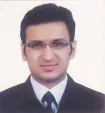- within Intellectual Property, Privacy and Employment and HR topic(s)
- with readers working within the Pharmaceuticals & BioTech and Law Firm industries
The recently published CII/CRI 2013 guidelines intend to address all apprehensions, ambiguities, uncertainties about Section 3(k). At the very beginning, the guidelines define important terminologies used while dealing with the CIIs, like "computer system", "data", firmware" , "hardware", "per se" etc. Further, the guidelines highlight what constitutes a technical effect and technical advancement and provided numerous scenarios that come under the purview thereof. Specifically, the draft guidelines elaborately define the terms "technical effect" and "technical advancement". "Technical effect" has been defined as a solution to a technical problem which the invention, taken as a whole, overcomes. A non-exhaustive list of examples of technical effect, as provided in the guidelines, includes higher speed, reduced hard-disk access time, more economic memory use, more efficient data search or compression techniques, improved user interface and improved transmission or reception of radio signals. The guidelines define "technical advancement" as a contribution to the state of art. The guidelines highlight that technical advancement always involve a technical effect, but that not all technical effects need result in technical advancement.
During the process of examination under Section 3(k), the Patent Office separates the 'technical features' and 'non-technical features' claimed in the claims related to a CRI, and subsequently analyzes the technical features of the claims and the technical problems the claims purport to solve. Therefore, it is necessary to emphasize on the technical features and the technical problem that is intended to be addressed by the claimed computer related invention.
The term 'per se,' though not defined in the Patent Act, has the dictionary meaning "by itself," which suggests that the term 'per se' signifies an entity which exists on its own rather than in connection with other things. Thus, according to the IPO, computer program by itself is not patentable, but with a combination of hardware components (hardware limitations like processor, memory, interfaces) a computer program will prima facie be considered patentable. This to a large extent is an agreeable proposition. It has been initially been rationalized that as subject matters solely relating to computer programmes do not fall under the category of "manner of manufacture", they are not held statutory. What is clearly not patentable is a novel feature existing in the lines of code.
The guidelines go further and place an additional requirement that the hardware which executes the computer program in the application must be more than a general-purpose computer. Mere combination of a computer program with hardware does not take a computer program outside the purview of Section 3(k). As per the guidelines, a computer program in combination with a general purpose known computer is not patentable. The examiners have been advised to exercise caution in determining the integration of novel hardware with a computer program. The guidelines have further stated that determining whether the hardware is program specific or whether the program is hardware specific is important, as a computer program which may work on any general purpose known computer is not patentable. If the hardware is novel, then claims related to the hardware in combination with a novel or an even known computer program will be considered statutory subject matter. The guidelines seem to encourage novelty in hardware to overcome rejections under Section 3(k). The Patent Office also ascertains whether the claims of the CII fall within the ambit of Section 3, especially Section 3(k) of the Indian Patents Act, 1970.
Further, the guidelines state, in an application for a patent for a hardware system running on a computer program, the examiners need to consider "as to how integrated is the novel hardware with the computer program." If a computer program like application level programs, which require minimal or no integration with the hardware, is loosely integrated, then the patent application will be considered non-patentable irrespective of the presence of hardware support, novelty, inventiveness and industrial applicability.
Further, the guidelines also discuss the various types of claim used in computer-implemented invention applications, namely, system claims, method claims and computer-readable medium claims, and provides a number of examples to illustrate the manner of examination of various types of claim. The guidelines also state that in determining the patentability of computer-implemented invention-related applications, examiners should rely on the substance/subject matter of the claim rather than its literal interpretation. Deliberate wordings/Literature used in claims to hide computer-implemented inventions under the garb of system should not make an otherwise non-patentable claim patentable.
Further, the guidelines state that claims in means-plus-function form will be rejected unless the structural features of such means are disclosed in the specification. Disappointingly, the guidelines provide no legal basis for such rejection, although such practice of not depicting any hardware support in the specification being legally and rationally correct. Furthermore, the guidelines state that as per the legislative intent, there is a complete embargo upon inventions which are mental acts, aesthetic creations, mathematical or business-related methods, algorithms, methods of playing games and methods of presenting information.
Conclusion
The guidelines have certainly brought in clarity in a growing field of inventions and will assist not only the examiners, but also the specification drafters and inventors in framing their specifications in an acceptable manner. In addition, the draft guidelines for examination of computer related inventions intend to harmonize the examination strategies across all the Patent offices.
The content of this article is intended to provide a general guide to the subject matter. Specialist advice should be sought about your specific circumstances.

